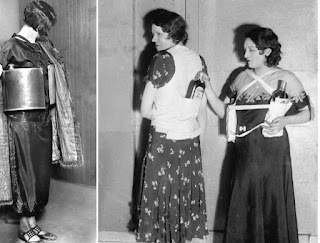Course Project Prospectus
I. Abstract:
a. Summary: The Prohibition era was a period from 1920 to 1933 when the United States banned the production, consumption, transportation, or importation of alcohol. While Prohibition became law with the passage of the 19th Amendment, it was a direct result of the Progressive Movement. Spearheaded by Protestants, Progressives, and women, Prohibition was seen as a way to combat a large number of America’s social ills, but it seemed the have a completely opposite effect – leading to the rise of organized crime and moral “looseness.”
b. Draft Thesis: By using primary and secondary sources, I will examine and compare how we remember and memorialize Prohibition versus what actually occurred. This era has been incredibly glamourized through media, leading to a skewed idea of the “Roaring 20s.” We tend to remember speakeasies, flappers, and mobsters, instead of the “suppression of vice” that it truly was. This leads to inaccurate responses to things today, like race and the war on drugs, and subsequent blanket prohibition.
c. Outline: Through a series of blog posts (using blogger.com), I will attempt to tell the story of Prohibition, while also defining or debunking certain tales of the era.
i. I will have between 10 to 25 posts – using images, clips, or texts – that will show what life was really like during the Prohibition era and comparing that to how society has chosen to remember it.
1. In my first blog post I will include my Project Prospectus, since this is a public domain, so that anyone who may come across it will be able to see that this was for a school project.
2. In 2-3 posts, I will explain how Prohibition came to be.
3. In 2-3 posts, I will explain what Prohibition is and how it was enforced.
4. In 2-5 posts I will show how Prohibition directly led to the rise of organized crime.
5. In 1 post I will use a clip from The Great Gatsby, a film/book we have all discussed in school, to show the modern portrayal of the “Roaring 20s.”
6. In 2 posts I will include images or a clip from Road to Perdition to show how we, today, believe organized crime looked and acted.
7. In 2-4 posts I will include images of “true” mobsters (like Al Capone), bootlegging, flappers, speakeasies, and more.
8. I will close with a couple of posts explaining the importance of accurate historical portrayals within media and how this era and its subsequent memorialization affected today's ideals of not only Prohibition, but drugs and alcohol.

Comments
Post a Comment